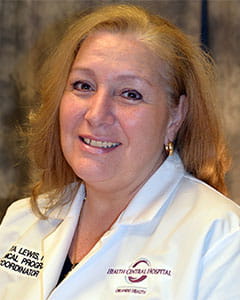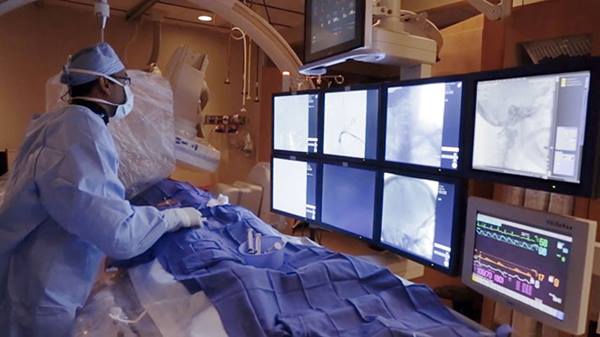What is Comprehensive Stroke Care—and Why is it Critical?
Although stroke rates have declined over the past two decades due to improved medical care and better control of risk factors, stroke remains the fourth leading cause of death in the United States, and a leading cause of long-term disability.
One thing that all medical professionals can agree on is that when a stroke occurs, time is of the essence. During an attack, the brain loses 1.9 million neurons every minute, and every 30 minutes of delay in receiving stroke therapy results in a 10 to 15 percent reduction in good outcomes.
That’s why every second counts—and when time is of the essence, having access to comprehensive care is crucial. This video captures the scope of our Comprehensive Stroke Center in providing care for victims of stroke.
What is Comprehensive Stroke Care?
There are two types of stroke centers—primary and comprehensive. Both play a critical role in the timely treatment of a stroke. During an attack, it is critical to get to the closest stroke center as fast as possible.
Primary stroke centers can quickly evaluate a patient and administer a blood clot-busting medication known as tissue plasminogen activator (TPA). If TPA is given early in the attack, it can help to dissolve the blood clot in the brain and restore blood flow, thereby limiting the amount of brain function lost.
When medical intervention isn’t enough, comprehensive stroke centers provide the next level of advanced care. This includes the ability to provide surgical interventions from highly specialized neurosurgeons, such as the endovascular removal of a blood clot.
To be designated as a comprehensive stroke center, a hospital needs to have several critical elements in place. These include things like dedicated neuro-intensive care unit beds for complex stroke patients, advanced brain imaging capabilities and post-hospital care coordination. The facility must also handle a certain volume of patients each year, undergo a peer review process, participate in stroke research and meet specific performance measures.
Why Does Comprehensive Stroke Care Matter for Patients?
Having access to a highly specialized, multidisciplinary care team improves patient outcomes overall. A comprehensive stroke center can quickly perform an initial diagnosis and administer TPA treatment, usually under 60 minutes from arrival.
If the patient still exhibits a neurological deficit, additional imaging can quickly identify the amount of viable brain tissue that can potentially be saved. From there, highly trained neurosurgeons can determine whether surgical intervention is necessary.
Comprehensive stroke centers also can provide comprehensive post-attack assessment and hospital-level after care, which is critically important to the rehabilitation of a patient. Specialists focus on a range of treatments that target the regrowth of neuromuscular systems, and administer aggressive physical, occupational and speech therapy to speed recovery and improve quality of life.
To learn more about our comprehensive stroke center, watch this Orange TV Healthy Connections interview with our board-certified neurologist, Samuel K. Tsappidi, MD.
Remember—If You Suspect a Stroke, Act F.A.S.T.
A stroke is a serious medical condition that requires immediate treatment. Each minute lost during a stroke increases the chance of stroke-related disability or death. By knowing and recognizing the warning signs of stroke, you can be prepared to call for help right away.
F.A.S.T. is an easy way to remember the sudden signs of stroke. It stands for:
- Face drooping
- Arm weakness
- Speech difficulty
- Time to call 9-1-1 if the person shows any of these symptoms. Even if the symptoms subside, it is still best to call 9-1-1 for immediate medical treatment.
By learning the F.A.S.T. acronym, you can ensure timely medical treatment for you or your loved one.








